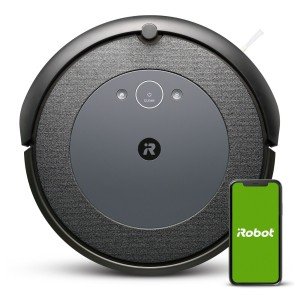The Evolution of Robot Hoovers: Revolutionizing Home Cleaning
Robot hoovers, likewise referred to as robotic vacuum, have actually transformed how individuals approach home cleaning tasks. At first introduced in the late 1990s, these autonomous machines have actually evolved rapidly due to improvements in innovation, expert system, and device learning. Today, they are geared up with a selection of functions that make them extremely efficient in keeping tidiness in living areas. This short article explores the history, operating, benefits, and future of robot hoovers.
The History of Robot Hoovers
The idea of robotic vacuums go back to the 1970s, however it wasn't up until the launch of the Roomba by iRobot in 2002 that they got mainstream attention. The Roomba was created to automatically browse different surfaces, preventing challenges while effectively cleaning floors. Because then, numerous considerable advancements have actually taken place, including:
| Year | Advancement |
|---|---|
| 1996 | Very first prototype robotic vacuum cleaner developed by a Japanese business. |
| 2002 | iRobot launches the Roomba, mass promoting robotic vacuums. |
| 2004 | Intro of the first Roomba with a dirt detection sensor. |
| 2011 | Introduce of designs with cordless capabilities and mobile phone integration. |
| 2020 | Advanced designs featuring AI, enhanced navigation systems, and mopping capabilities. |
How Robot Hoovers Work
Robot hoovers operate on a mix of sensors, cameras, and algorithms that enable them to clean efficiently. Secret components of these gadgets consist of:
Sensors:
- Obstacle Avoidance Sensors: Detect walls, furniture, and even stairs, preventing crashes and falls.
- Dirt Detection Sensors: Identify locations that require more extensive cleaning.
Navigation:
- Gyroscopes: Help determine the robot's orientation and movement.
- Cams and Lidar: Enable mapping of the home environment to produce optimum cleaning courses.
Cleaning Mechanisms:
- Vacuum Motors: Generate suction to pick up dirt and debris.
- Brush Rollers: Agitate dirt out of carpets for deeper cleaning.
Power Supply:
- Batteries: Rechargeable lithium-ion batteries provide the required power for extended cleaning cycles.
User Interface:
- Mobile Apps and Smart Home Integration: Users can schedule cleanings, display performance, and manage the robot from another location.
Benefits of Robot Hoovers
Robot hoovers offer various benefits, making them an appealing alternative for modern families:
- Time-Saving: Automated cleaning allows users to concentrate on other tasks while the robot effectively cleans up floorings.
- Convenience: Many models can be arranged for cleaning sessions, guaranteeing that homes remain tidy without manual effort.
- Ease of access: Ideal for people with mobility difficulties or hectic lifestyles, making it possible for much easier home maintenance.
- Constant Cleaning: Regular, automated cleanings reduce the accumulation of dirt and allergens, adding to a much healthier living environment.
- Smart Technology: Integration with smart home systems permits increased control and modification.
Limitations of Robot Hoovers
In spite of their advantages, robot hoovers come with particular limitations:
- Navigation Challenges: They might have a hard time in cluttered areas or with specific floor types such as high-pile carpets.
- Battery Life: Most models need regular charging, which can limit cleaning duration.
- Upkeep: Regular cleaning of filters, brushes, and clearing dust bins is essential for optimal performance.
- Price: Advanced designs can be expensive compared to standard vacuum cleaners.
The Future of Robot Hoovers
As technology continues to develop, the future of robot hoovers looks appealing. Prepared for improvements include:
- Improved AI: Enhanced algorithms will enable much better object acknowledgment and dynamic mapping of areas.
- Hybrid Models: Integration of vacuuming and mopping abilities in one gadget will supply a thorough cleaning option.
- Increased Autonomy: Future models may navigate even the most complicated environments without human intervention.
- Sustainability: Battery technology advancements will result in longer-lasting, more energy-efficient robots.
Regularly Asked Questions (FAQs)
1. Are robot hoovers effective for family pet hair elimination?
Yes, numerous robot hoovers are specifically created to tackle family pet hair with effective suction and specialized brushes that reduce tangling.
2. How do robot hoovers browse around furniture?
Robot hoovers utilize a mix of sensors and electronic cameras to find obstacles, enabling them to navigate around furnishings and avoid collisions.
3. Can robot hoovers clean carpets?
The majority of contemporary robot hoovers are reliable on both difficult floors and carpets. It is a good idea to examine the specifications of individual designs for specific performance.
4. Do robot hoovers need programs?
Lots of robot hoovers come with easy to use apps that allow owners to set schedules and customize cleaning choices, making programming simple.
5. Just how much do robot hoovers cost?
Costs for robot hoovers differ extensively, ranging from ₤ 200 to around ₤ 1,500, depending upon functions and brand name.
Robot hoovers have actually come a long way because their beginning, using an efficient and convenient cleaning option for modern-day households. automatic vacuum increasing capability and intelligence make them a useful option for people seeking to simplify their cleaning routines. As innovation continues to advance, robot hoovers will likely become much more capable, supplying additional features that deal with the evolving needs of users. Their journey from novelty to necessity highlights a fundamental shift in how society approaches home upkeep, marking a significant milestone in the crossway of innovation and life.

